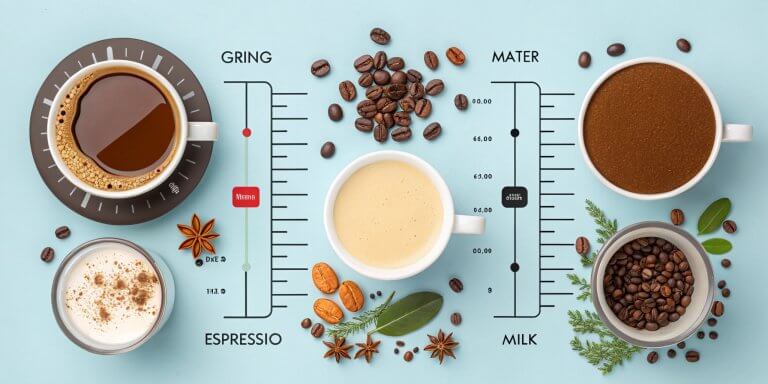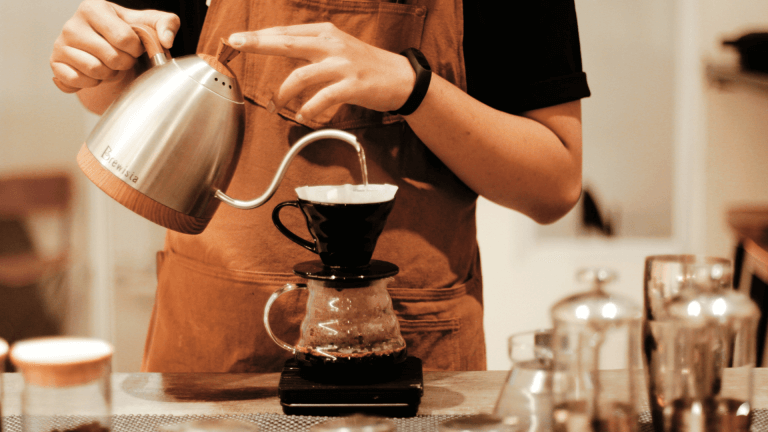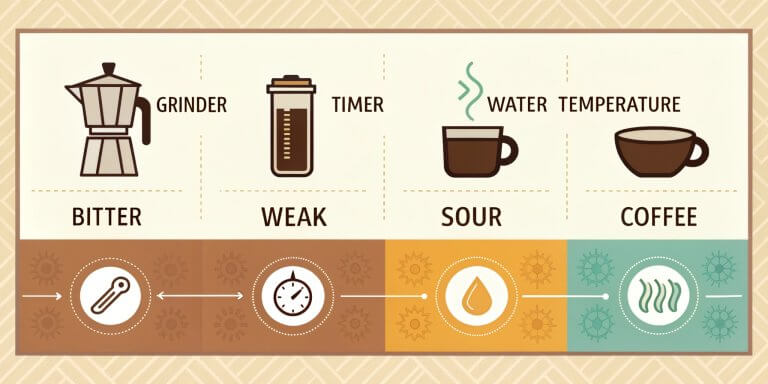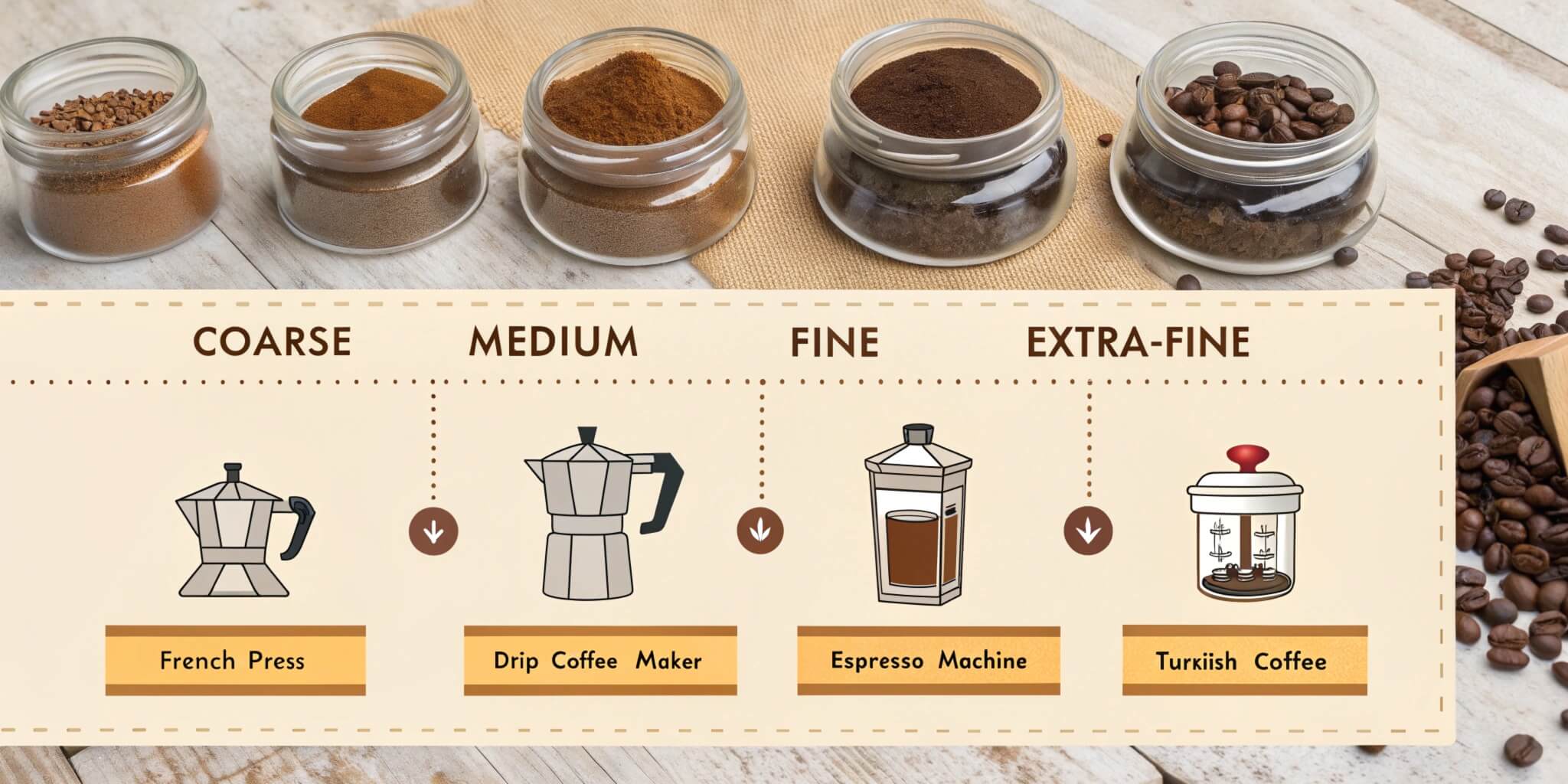
One of the best ways to improve the flavor of your coffee at home is by getting the grind size right. The size of the coffee grounds impacts your brew’s flavor, strength, and texture. Different brewing methods require different grind sizes because they interact with water during extraction. This guide will walk you through the best grind sizes for various brewing techniques, helping you brew a better cup of coffee.
The Basics of Coffee Grinding and Extraction
To make coffee, water needs to pull the flavor from ground coffee. This process is called extraction. When the grind size is too coarse (big chunks), water passes too quickly, under-extracting the coffee and making it taste sour or weak. If it’s too fine (like powder), the coffee will be over-extracted, tasting bitter and unpleasant.

Matching grind sizes to their ideal brewing methods
Getting the right grind size helps balance these flavors. Using the correct grind size for your brewing method can make a big difference, bringing out the best flavors in the coffee beans.
Choosing the Right Coffee Grinder: Burr vs. Blade
A consistent grind size is essential for a balanced cup of coffee. Burr grinders are highly recommended because they create even-sized grounds, while blade grinders chop the beans unevenly.

Why burr grinders produce superior coffee consistency over blade grinders
Extra Coarse Grind for Long Extraction Times
Extra coarse grinds look like chunky pieces of peppercorn and are best for cold brew and cowboy coffee. Since these grounds are so extensive, they extract flavor slowly, making them ideal for brewing methods that require long extraction times, like cold brew, which can steep for 12 hours or more.
Coarse Grind for Immersion Brewing
Coarse grounds, which resemble sea salt, are best for immersion brewing methods like the French press. In this method, the coffee steeps in water before being filtered. Coarse grounds work well because they don’t pass through the metal filter, resulting in a full-bodied cup.
Medium-coarse grind for Slow Pour-Over Methods
Like rough sand, medium-coarse grounds are used for slow-drip pour-over methods like Chemex and Clever dripper. These grounds balance allows enough extraction time and prevents over-extraction, producing a clean cup with balanced flavors.
Medium Grind for Drip Coffee and Auto Brewers
A medium grind, which looks like sand, is ideal for most drip coffee makers and flat-bottom filters. This grind size allows the coffee to be extracted evenly in the time it takes for water to pass through the grounds.
Medium-fine grind for Faster Pour-Over Brewing
Medium-fine grounds feel like granulated sugar and are perfect for cone-shaped pour-over brewers, which, due to their design, have a shorter brew time.
Fine Grind for Short Extraction Methods
Fine grinds resemble table salt and are used for quick-extraction methods like espresso and the moka pot. The smaller particles allow water to extract the coffee quickly, making it more concentrated.
Extra Fine Grind for Turkish Coffee
Extra-fine grinds have a powdery texture, like powdered sugar. This grind size is used for Turkish coffee, where the grounds are combined with water and boiled in a small pot called an ibrik.

Brewing time and grind size relationship across different coffee methods
Conclusion
Finding the perfect grind size for each brewing method can make a noticeable difference in the taste and enjoyment of your coffee. Experimenting with grind size is one of the simplest ways to enhance your coffee experience, as minor adjustments can lead to significant changes in flavor. Using a quality burr grinder ensures consistency across different grind sizes, helping you achieve your ideal cup every time.
Whether you prefer the smoothness of cold brew or the intensity of espresso, matching your grind size to your brewing method brings out the best in every coffee bean. Enjoy exploring the variety of flavors and strengths that each technique offers!

